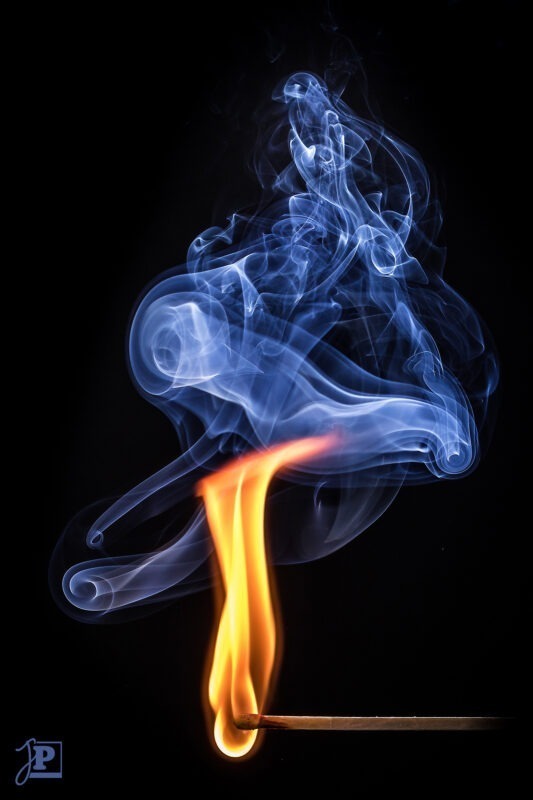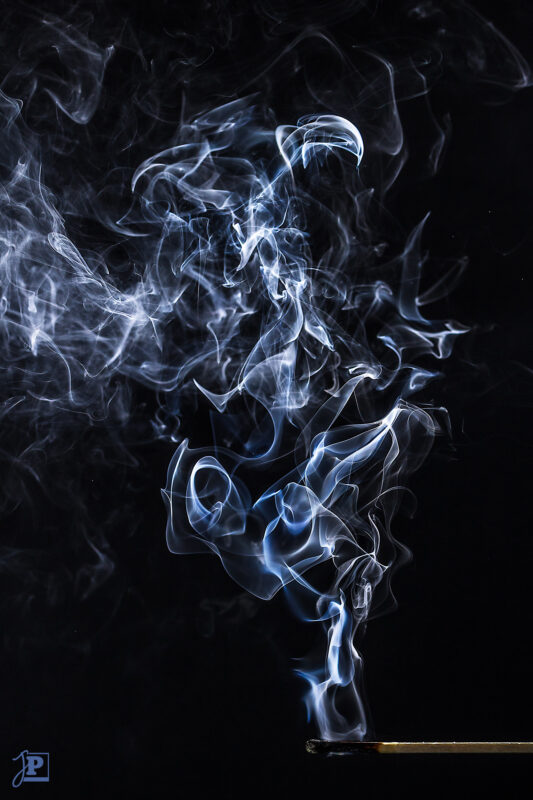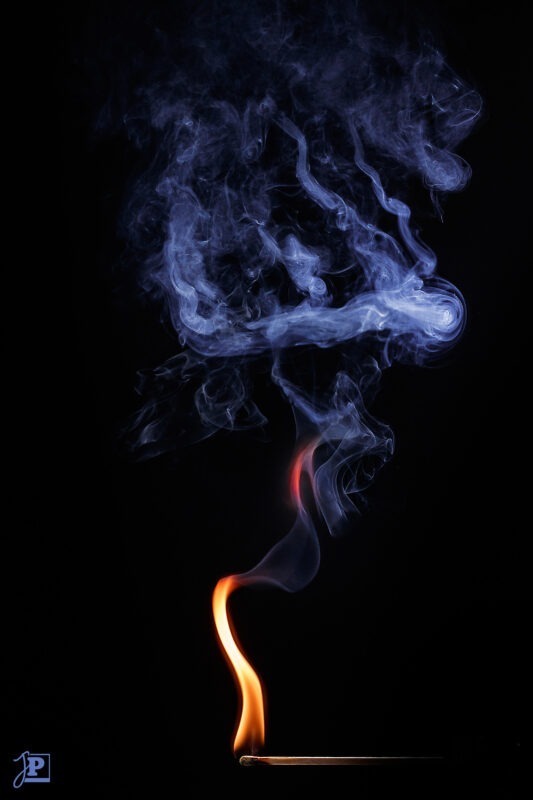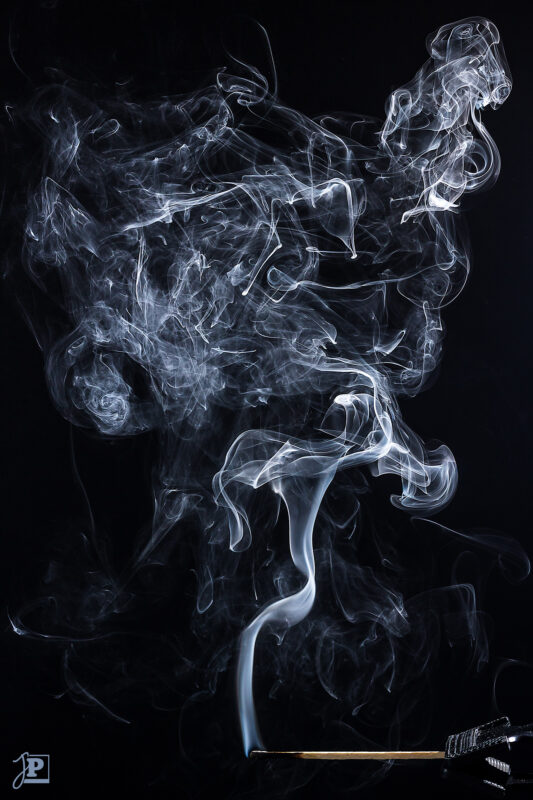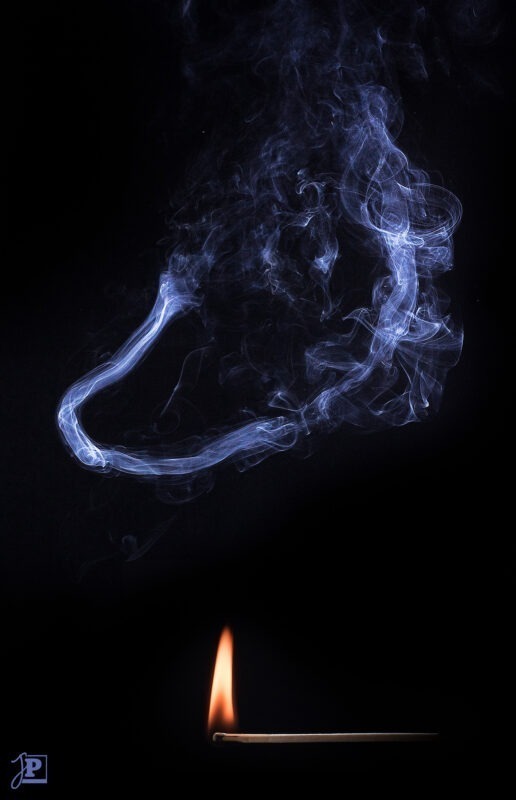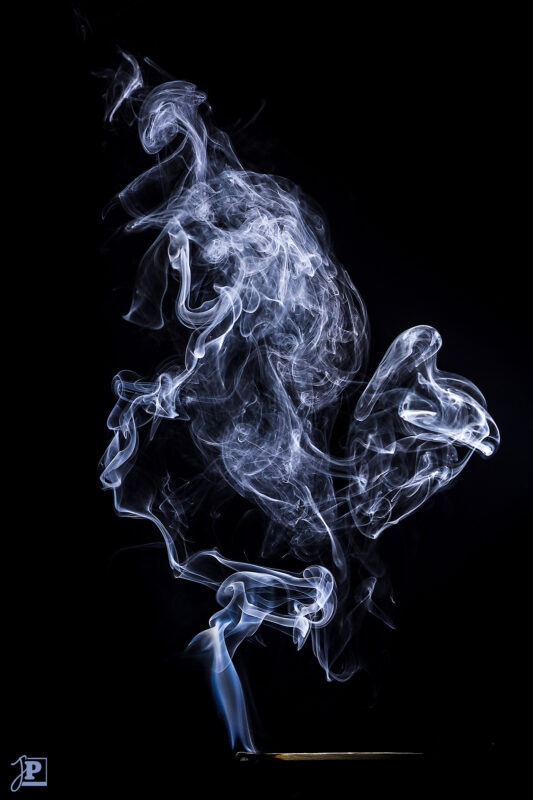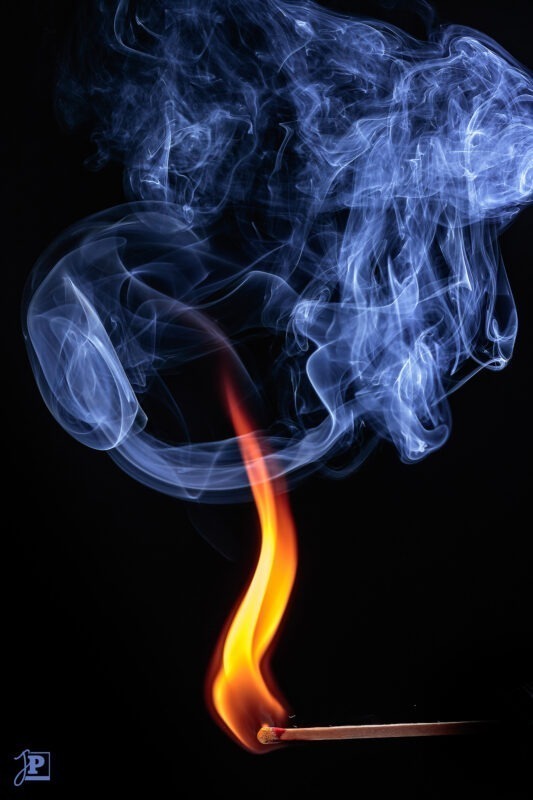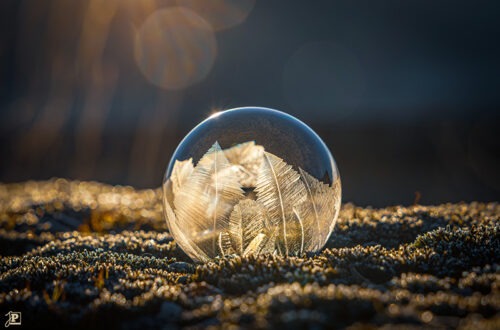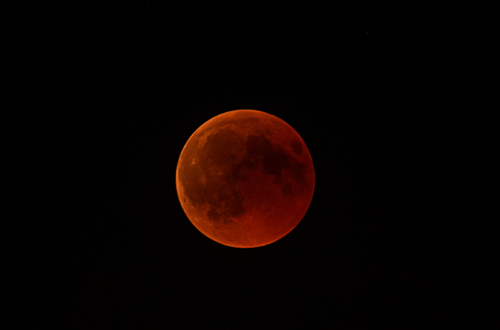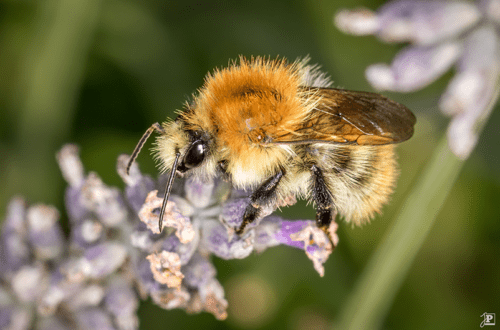Fire & Flame
Is it possible to freeze a flame? This question, which makes little sense physically, can be answered photographically. One evening during Advent, the idea was born to capture the moment when a match is lit. Easier said than done…
Match and flame, smoke and flash
The idea was there, next came the question of implementation. First attempts with a match struck along the box in the classical way were, as expected, disappointing. Because of the strong movement, often only yellow-orange streaks and blotches were visible on the pictures. So, the whole thing required a bit more preparation.
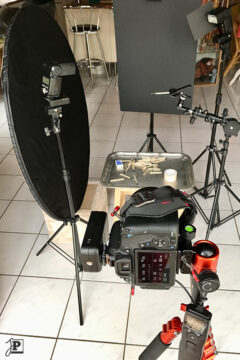
I finally found my first approaches in a YouTube video. With a clamp on a boom tripod, which was originally intended to hold photo backgrounds, I was able to position the match exactly in front of the camera. Above all, I could now focus the lens manually before taking the picture, because the auto-focus can’t cope with the flickering flame. To light the match, I held a burning candle a few inches underneath.
A black photo cardboard served as background. With the 90mm macro lens, I soon found the distances so that the background was no longer illuminated by the flame. Other objects from the photo shelf helped to reduce the ambient light. After some trial and error, I was satisfied with the settings at ISO 200, aperture ƒ/8 and 1/200th second exposure time. The flame was correctly exposed and at the same time, the background remained completely black.
However, I was not happy with how the smoke appeared. It was barely visible, and while the slight motion blur in the flame was hardly disturbing, it made the smoke look washed out. Once again, the internet helped: an external flash was the solution for both problems. It lit the smoke from behind, which made it stand out in the picture. Even more important was the fact that it was sufficient to use the flash at the lowest power level (1/128). At this setting, the flash burns for just a 20,000th of a second – so the smoke is frozen razor sharp! A second flash from diagonally in front intensified the effect and illuminated the match itself so that it was clearly visible in the picture. In addition, at 1/128th power, the flash can keep up with the camera’s continuous shooting mode, so I was able to take a whole series of photos of each match.
After everything was set up correctly, a rhythm was quickly established: hold the candle under the match – as soon as the match lit, take a series of pictures with the help of a remote shutter release – blow out the match – take another series of pictures. After a good 30 matches, I had several hundred pictures to choose from – certainly enough for starters. Time to air the apartment properly.
Post-production
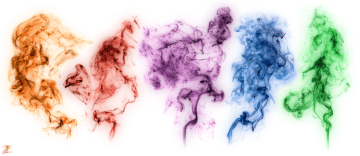
After all the equipment was stowed away, I went to the computer. While looking at the pictures, I was most surprised by the patterns that appeared in the smoke. Sometimes they were rings, sometimes interlaced vortices, and sometimes complex patterns that reminded me of a Rorschach test. Who else can see a dancing unicorn in the photos below?
The main steps during post-production were to increase the contrast and set the background to 100% black. I increased the saturation so that the blue of the smoke as well as the colors of the flame would be better accentuated. And I sharpened it a lot – definitely too much, looking at it with my current eye. Sometimes less is just more, but you learn as well. After all, these photos were taken more than three years ago.
Of course, you can also exaggerate it on purpose and thus create completely different, artistic effects. If you select only the smoke, without the match, and invert the image, the black background becomes white and the light smoke becomes dark. If you then color the result in varied ways, abstract structures with a very unique effect are created. This rainbow of smoke is printed on canvas and hangs on the wall at home.
The Result
What remains is a series of photographs with surprising structures and patterns – flames and smoke frozen in motion. Especially the first photo in the series is one of my favorites. Not only did it make it into my 2018 calendar as the November sheet, but it now also hangs in the living room of a good friend in the format 80x120cm, printed on aluminum.



